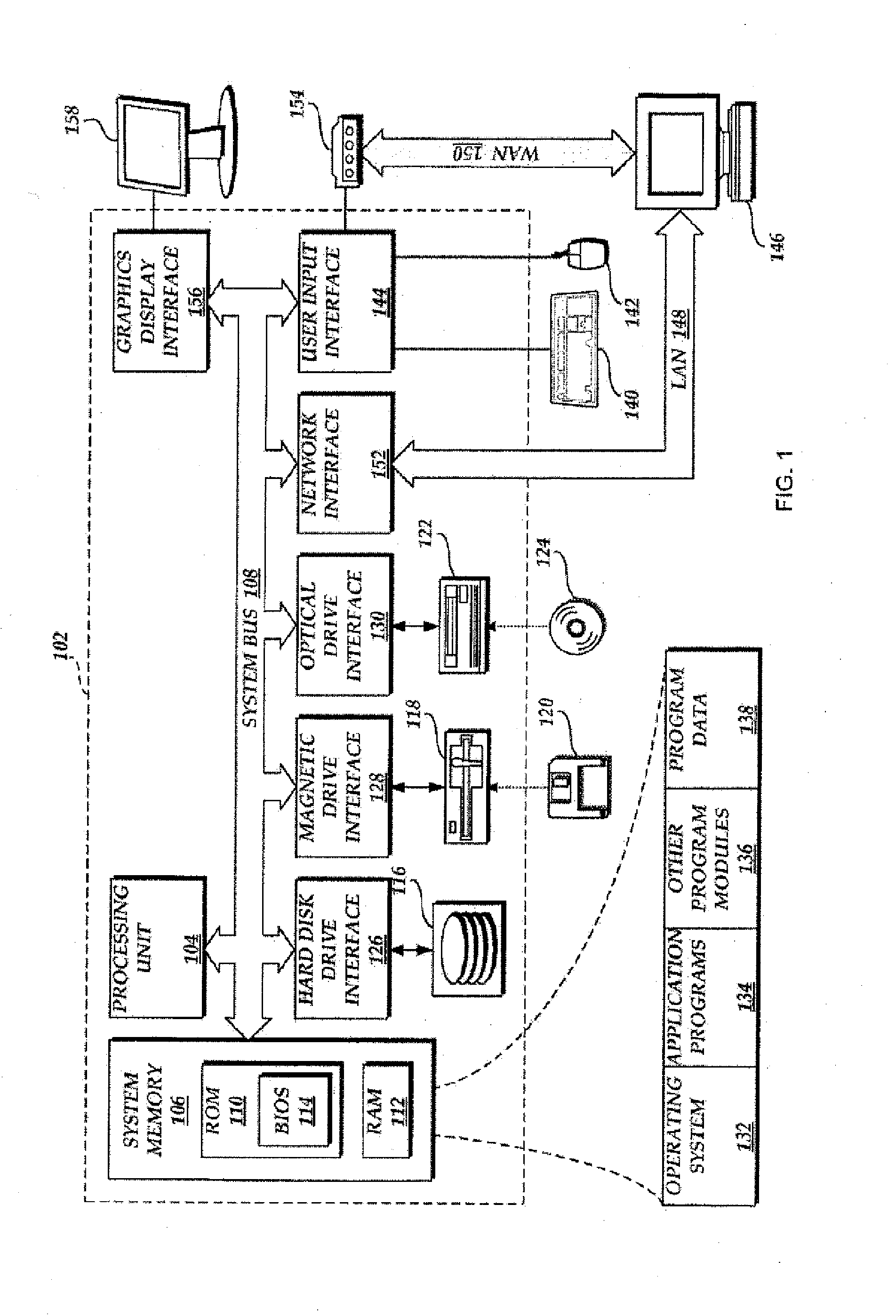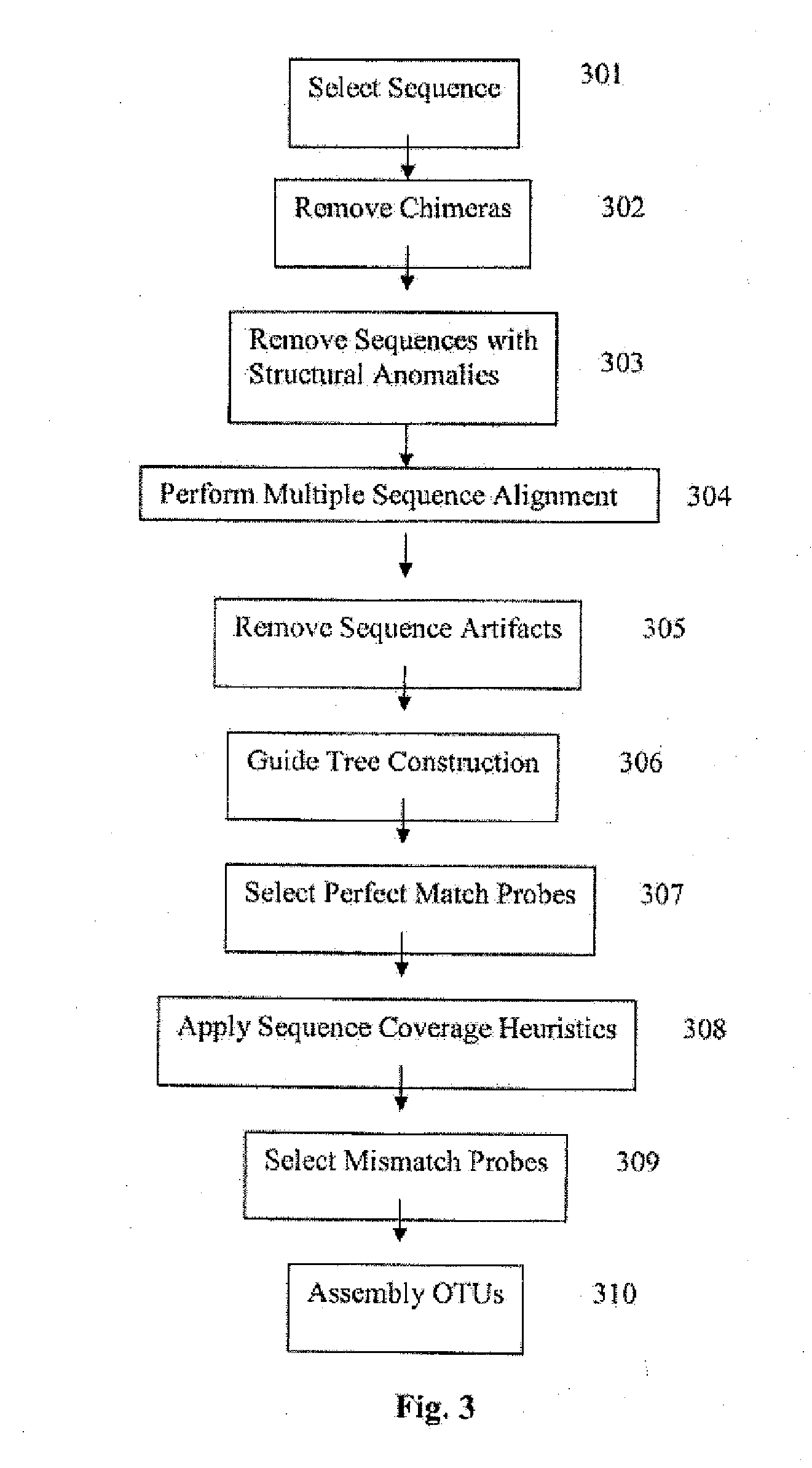Methods and systems for phylogenetic analysis
a phylogenetic analysis and method technology, applied in the field of methods and systems for phylogenetic analysis, can solve the problems of increasing the difficulty of design of systems to detect the different hybridization reactions, the degree of homology between members is complex, and the design and analysis problems become acu
- Summary
- Abstract
- Description
- Claims
- Application Information
AI Technical Summary
Benefits of technology
Problems solved by technology
Method used
Image
Examples
example 1
PhyloChip Array Analysis
[0268]Following sample preparation, application, incubation and washing, using standard techniques, PhyloChip G3 arrays were scanned using a GeneArray Scanner from Affymetrix. The scan was captured as a pixel image using standard AFFYMETRIX® software (GCOS v1.6 using parameter: Percentile v6.0) that reduces the data to an individual row in a text-encoded table for each probe. See Table 3.
TABLE 3Exemplary Display of Array Data[INTENSITY]NumberCells = 506944CellHeader = XYNPIXELSMEANSTDV00167.047.925104293.01060.22520179.343.736304437.0681.525
[0269]Each analysis system had approximately 1,016,000 cells, with 1 probe sequence per cell. The analysis system scanner recorded the signal intensity across the array, which ranges from 0 to 65,000 arbitrary units (a.u) in a regular grid with −30-45 pixels per cell. A 2 pixel margin was used between adjacent cells, leaving approximately 25-40 pixels per probe of usable signal. From these pixels, the AFFYMETRIX® software ...
example 2
Water Quality Testing-Fecal Contamination Assay
[0299]The dry weather water flow in the lower Mission Creek and Laguna watersheds of Santa Barbara, Calif., a place associated with elevated fecal indicator bacteria concentrations and human fecal contamination will be sampled with an array of the present invention. The goal is to characterize whole bacterial community composition and biogeographic pattern in an urbanized creek, 2) compare taxa detected by molecular methods to conventional fecal indicator bacteria, and 3) elucidate reliable groups of bacterial taxa to be used in culture-independent community-based fecal contamination monitoring (indicator species for fecal contamination).
[0300]The watersheds flow through an urbanized area of downtown Santa Barbara. Places to be sampled include storm drains, sections of the flowing creek, lagoon (M2, M4) and ocean. Additionally sites include where Old Mission Creek tributary discharges into Mission Creek. The dry creek flow can have many...
example 3
Fecal Sample Associated Taxa
[0320]Three fecal samples (human feces, from Santa Barbara, and two raw sewage, from the influent at the El Estero Wastewater Treatment plant, Santa Barbara, Calif.) were collected. Water column samples from nine locations were also collected within the Mission Creek and Laguna watersheds in Santa Barbara County, Calif. Taxa were present, as indicated by analysis using the PhyloChip assay, in all three fecal samples, and in all 27 water samples. The results were tabulated separately.
[0321]The list of 503 taxa are shown in Table 4 and was derived by removing those taxa found in all 27 water samples from the taxa that were present in all three fecal samples. These 503 taxa could potentially represent bacteria that are common in the human feces and sewage samples analyzed, but not found in the background environment. The similarity of the whole bacterial community composition to the fecal-associated subpopulation is useful as an indication of fecal pollution...
PUM
| Property | Measurement | Unit |
|---|---|---|
| Fraction | aaaaa | aaaaa |
| Fraction | aaaaa | aaaaa |
| Electrical conductance | aaaaa | aaaaa |
Abstract
Description
Claims
Application Information
 Login to View More
Login to View More - R&D
- Intellectual Property
- Life Sciences
- Materials
- Tech Scout
- Unparalleled Data Quality
- Higher Quality Content
- 60% Fewer Hallucinations
Browse by: Latest US Patents, China's latest patents, Technical Efficacy Thesaurus, Application Domain, Technology Topic, Popular Technical Reports.
© 2025 PatSnap. All rights reserved.Legal|Privacy policy|Modern Slavery Act Transparency Statement|Sitemap|About US| Contact US: help@patsnap.com



